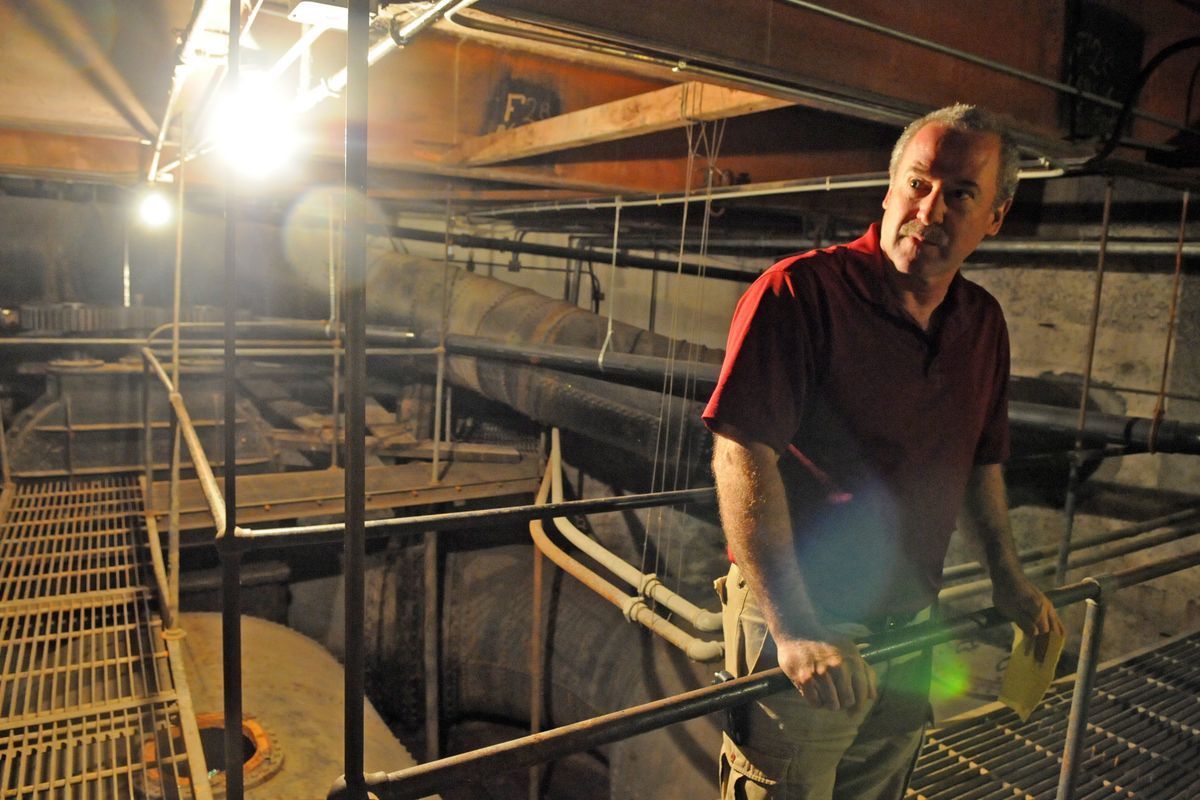For street and water projects, downturn has an upside
City rescheduling saves money, creates work for local businesses

In the midst of the Great Depression, Spokane won federal money to upgrade the Upriver Dam to generate more power and construction jobs.
Nearly 75 years later and in the doldrums of another economic downturn, a new construction project at the Upriver Dam also aims to stimulate the local economy – but without the help of the federal government.
The Spokane City Council recently approved a $400,000 architectural contract to design a rehabilitation of the dam’s pump house and water operations center, which was built in stages starting in the 1890s.
The work had been scheduled for a couple years from now, but Spokane Mayor Mary Verner has asked her staff to consider earlier start dates for already planned and funded projects, primarily to take advantage of low construction prices but also to help spur the local economy.
This summer, the city sped up 12 street rehabilitation projects instead of just the nine that were planned.
The accelerated construction spending comes at an otherwise tough time around Spokane City Hall.
Later this week, about 120 city workers will be given layoff or demotion notices because of next year’s budget shortfall. But Verner and other administrators stress that money for Upriver Dam, street reconstruction and most public works projects can’t be transferred to balance operating budgets for ongoing city functions, such as police, fire and libraries.
Though some projects already have been sped up, the mayor is hesitant to describe it as a “stimulus package.” “It’s not just ‘make work,’ but work that the city needs to do,” Verner said in an interview earlier this month. “What we’re trying to do is try to get our economy over the hump. But we don’t want to make that kind of a false pretense – that we’re helping the economy but then all the money dries up and there aren’t any more city projects.”
City Engineer Mike Taylor said the city can save hundreds of thousands of dollars by moving projects ahead because construction companies are desperate for work.
“You get a tremendous bang for your buck,” he said.
Officials say many projects that are going out to bid have twice as many bidders as they would have had three or four years ago. The three street projects that were moved up to this summer likely will cost much less than planned, at least based on submitted bids.
The paving of A Street and other nearby blocks in northwest Spokane was expected to cost $1.1 million. The low bidder agreed to accept about $750,000. The paving of Nelson Street and adjacent streets in the Chief Garry Park neighborhood was estimated to cost $1.5 million. The lowest bid was for $1.1 million.
Paving work on several blocks downtown was moved ahead to coincide with the already scheduled paving of Second Avenue. The low bid on the total project was $1.1 million cheaper than the expected cost of $4.4 million.
Randy Barcus, a member of Verner’s economic forecast committee, said moving forward already planned road and public works projects may also benefit the private sector. Once businesses are ready to build again, their construction prices could be less because they won’t have to compete with these government projects, he said.
“If we can build roads for less money sooner rather than later, that’s a good thing,” said Barcus, chief economist for Avista Corp. “It may even speed up private construction later.”
Money for construction at Upriver Dam will be paid for through reserves built up from water bills. Construction still needs City Council approval and is expected to cost around $3 million.
Water Director Frank Triplett said the Upriver project makes sense as a job creator because it requires engineers, architects, carpenters, electricians, laborers and other workers who mostly will be from the Spokane area.
The Upriver Dam facility includes two of the city’s largest water wells and generates about $3 million worth of power, said Mark Cleveland, water operations superintendent. Most of that covers the energy cost of the city’s water system, but Avista Corp. buys $1 million worth of what’s left over.
The pump house and the original dam were built in the 1890s to divert fresh water into central Spokane before it reached the polluted waters downtown. In the mid-1930s the Public Works Administration financed construction of a new dam at the site to generate power. Electrical capacity of the dam tripled during reconstruction in the 1980s.
The rehabilitation of the operations center and pump house will fix years of deferred maintenance.
Triplett said the project will increase the security of the water system. The city’s water operations center, where employees monitor dam, pump and other water systems 24 hours a day sits next to the public entrance. After the remodel, the main entrance will shift to the original entrance of the structure, allowing employees to better control access to the building, he said.
Other improvements include a new roof, new electrical systems, new windows and a new heating and air conditioning system. Offices will be relocated outside of the city’s water testing lab.
The new heating system may use geothermal energy – using water on site to control the temperature in the building before discharging it into an old well.
Verner said other public works projects also will be considered for earlier start dates.
“We would like our community to be more aware of the essential role that city government is playing right now,” she said.